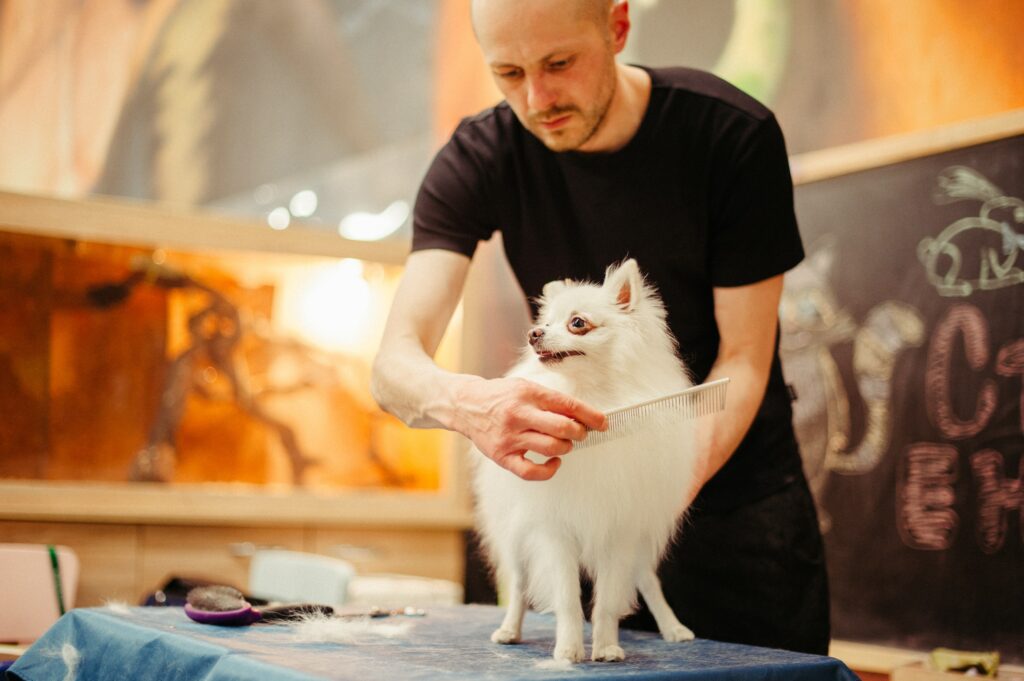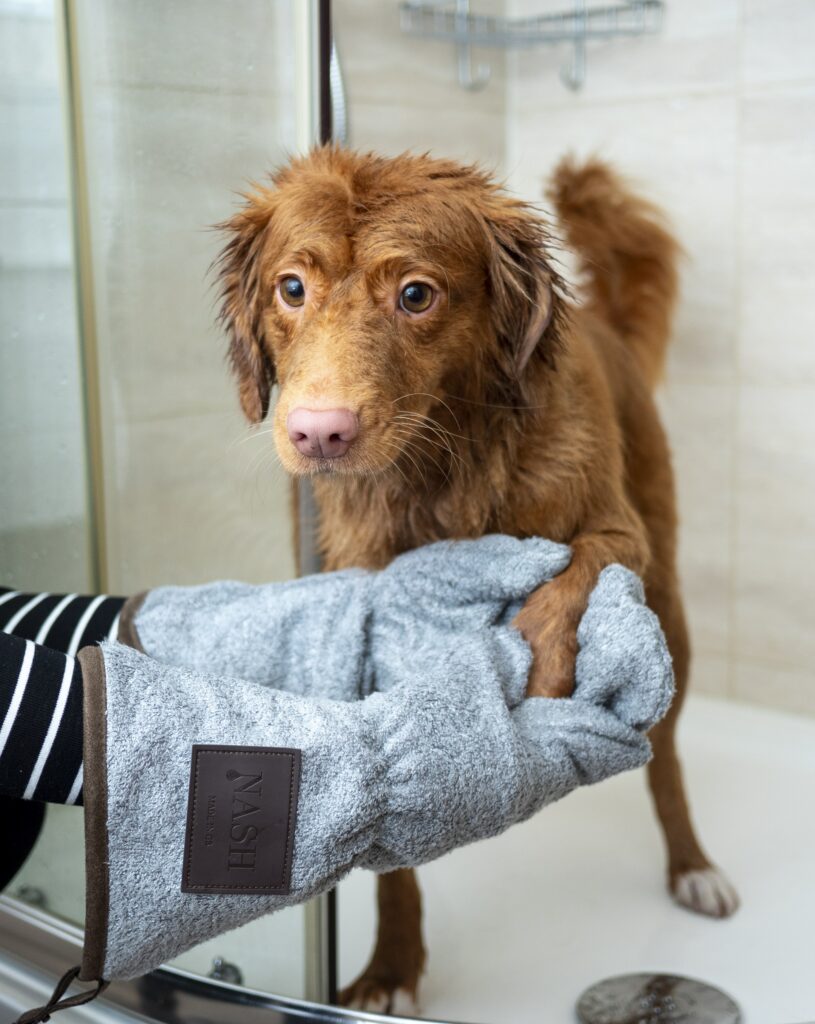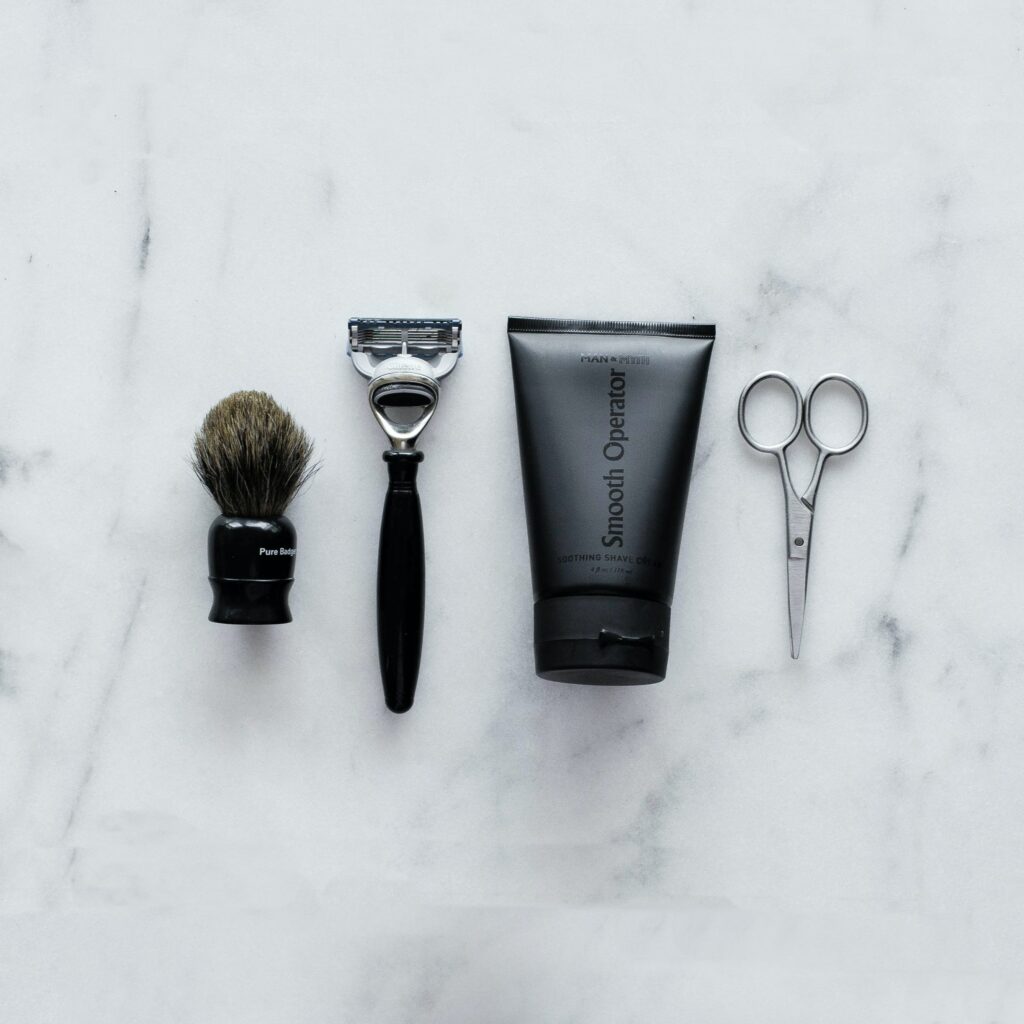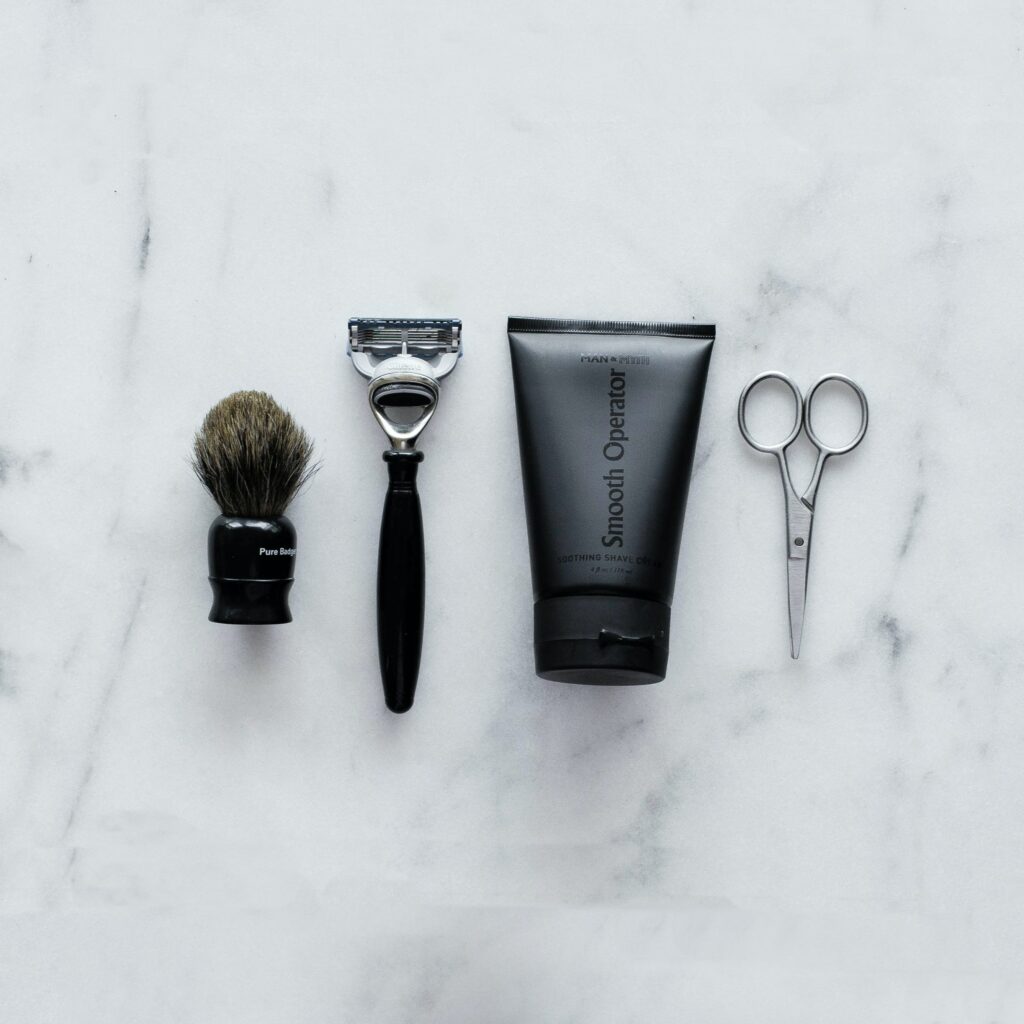In this comprehensive guide, you will find everything you need to know about pet grooming. From essential grooming tools to step-by-step instructions, this article will equip you with the knowledge and techniques to keep your furry friends looking their best. Whether you have a dog, cat, or any other type of pet, this ultimate guide will help you master the art of pet grooming and ensure your beloved companion stays healthy and happy. As a responsible pet owner, you understand the importance of taking care of your furry friend’s grooming needs. Pet grooming goes beyond just making your pet look good – it is an essential part of maintaining their overall health and well-being. In this comprehensive guide, we will explore the various aspects of pet grooming and provide you with the knowledge and tools you need to keep your pet looking and feeling their best.
Maintaining a Healthy Coat
A healthy coat is one of the indicators of a happy and well-cared-for pet. Regular grooming helps to keep your pet’s coat in optimal condition. Brushing your pet’s coat not only removes dirt, debris, and loose hair, but it also stimulates the production of natural oils, which helps to keep the coat shiny and healthy. Depending on the type of coat your pet has, different grooming tools can be used.
Preventing Matting and Tangles
Matting and tangles can be a common problem, especially for long-haired pets. Regular brushing helps to prevent these issues by removing loose hair and preventing the formation of knots. It is important to choose the right brush for your pet’s coat type to effectively remove tangles and prevent matting. Additionally, if your pet has a particularly stubborn tangle or mat, you may need to use a detangling spray or seek professional help to avoid causing discomfort or pain to your pet.
Preventing Skin Conditions
Regular grooming plays a crucial role in preventing various skin conditions. When you brush your pet’s coat, you not only remove loose hair and dirt, but you also stimulate blood circulation to the skin. This increased blood flow helps to promote the health of the skin and can prevent issues such as dryness, dandruff, and hot spots. Additionally, grooming allows you to notice any abnormalities or lumps on your pet’s skin, which can be an early sign of an underlying health issue.
Promoting Good Hygiene
Good hygiene is important for both you and your pet’s overall health. Regular grooming helps to keep your pet clean and fresh, reducing the risk of odors and potential skin infections. It is particularly important to clean certain areas of your pet’s body, such as their ears and teeth, to maintain optimal hygiene and prevent the development of infections or dental issues.

Basic Grooming Tools
To effectively groom your pet, you’ll need a few essential grooming tools. These tools are designed to make the grooming process easier, more comfortable, and more effective. Let’s take a look at some of the basic grooming tools you’ll need:
Brushes and Combs
The type of brush or comb you need will depend on your pet’s coat type. For pets with short coats, a bristle brush or rubber curry brush is ideal. These brushes help to remove loose hair and distribute natural oils, keeping the coat healthy and shiny. On the other hand, pets with long or medium-length coats may require a slicker brush or a rake to remove tangles and prevent matting.
Nail Clippers
Regular nail trimming is an important part of pet grooming. Overgrown nails can cause discomfort and even lead to joint issues. You’ll need a good quality pair of nail clippers specifically designed for pets. There are different types of nail clippers available, such as guillotine-style clippers and scissor-style clippers. Choose the one that you find most comfortable to use and ensure that you learn the proper technique to avoid cutting into the quick, which can cause bleeding and pain.
Ear Cleaner
Cleaning your pet’s ears regularly can help prevent infections and ear-related issues. Look for an ear cleaner that is specifically formulated for pets and follow the instructions on how to properly clean your pet’s ears. Be gentle while cleaning and avoid inserting anything deep into the ear canal, as it can cause injury.
Dog Shampoo
When it comes to bathing your dog, it is important to use a shampoo that is specifically formulated for dogs. Human shampoos can be harsh on a dog’s skin and strip away their natural oils. Choose a dog shampoo that suits your pet’s skin and coat type. It is also a good idea to consult your veterinarian if your dog has any specific skin conditions that require a specialized shampoo.
Toothbrush and Toothpaste
Just like humans, pets need regular dental care to maintain good oral hygiene. Use a toothbrush and toothpaste that are specifically designed for pets to brush your pet’s teeth regularly. Toothbrushes for pets usually have softer bristles and come in different sizes to accommodate different breeds. Start by introducing your pet to tooth brushing gradually and make it a positive experience for them.
Grooming Different Types of Pets
Every type of pet requires grooming, but the grooming needs can vary depending on the species. Let’s look at some basic guidelines for grooming different types of pets:
Dog Grooming
Dogs come in all shapes, sizes, and coat types. Regular brushing is essential for all dogs, regardless of their coat length or type. Short-haired dogs may require a bristle brush or a rubber curry brush, while long-haired dogs may need a slicker brush or a rake to prevent matting. Additionally, dogs with floppy ears, such as spaniels, may require more frequent ear cleaning to prevent infections.
Cat Grooming
Cats are generally great at self-grooming, but they can still benefit from regular brushing to remove loose hair and prevent hairballs. Cats with longer coats may require more frequent brushing to prevent tangles and matting. However, it is essential to approach grooming your cat with patience and care, as cats can be sensitive to being handled. Use a soft brush and always watch for signs of discomfort or stress.
Grooming Small Mammals
Small mammals such as rabbits, guinea pigs, and hamsters have specific grooming needs. While they may not require regular brushing, it is important to keep their habitat clean and provide them with a dust bath if necessary. Some small mammals, such as rabbits, may require occasional nail trimming. Always consult with a veterinarian or an experienced groomer for specific guidelines on grooming small mammals.
Grooming Birds
Birds have unique grooming needs compared to other pets. Regular grooming for birds involves providing them with the opportunity to bathe in water or mist, which helps to keep their feathers clean and well-maintained. Additionally, birds’ nails may require occasional trimming to prevent them from becoming overgrown. It is crucial to use proper techniques and seek professional help if you are unsure about grooming birds.
Grooming Reptiles
Reptiles have different grooming needs compared to furry pets. Regular maintenance of their habitat, such as cleaning the enclosure and ensuring proper temperature and humidity levels, is essential for their overall health. Additionally, some reptiles may require occasional skin shedding assistance, which should be done with care and knowledge of the specific species.

Brushing Your Pet
Regular brushing is a fundamental aspect of pet grooming, regardless of the type of pet you have. Brushing helps to remove loose hair, dirt, and debris, while also providing important stimulation to the skin. Let’s explore some key aspects of brushing your pet:
Choosing the Right Brush for Your Pet’s Coat
The first step in brushing your pet is selecting the appropriate brush or comb for their coat type. Different types of brushes are designed to work effectively on specific coats. For example, a slicker brush is suitable for pets with long or medium-length hair, while a bristle brush or rubber curry brush works well for short-haired pets. Consult with a professional groomer or your veterinarian to determine the best brush for your pet’s specific needs.
Brushing Techniques
When brushing your pet, it is important to use gentle and consistent strokes, following the direction of hair growth. Start from the head and make your way towards the tail. Be sure to pay attention to areas that are prone to matting, such as behind the ears, under the armpits, and around the tail. Regular brushing not only promotes a healthy coat but also creates a bonding experience with your pet.
Dealing with Tangles and Matting
If you encounter tangles or matting while brushing your pet, it is crucial to tackle them gently and with caution. Trying to force a brush or comb through a tangle can cause discomfort or pain to your pet. Instead, consider using a detangling spray or seek the assistance of a professional groomer. It is essential to prevent matting, as it can lead to more serious issues, such as skin infections.
Bathing Your Pet
Bathing your pet is another important aspect of their grooming routine. While some pets may need to be bathed more frequently than others, it is essential to follow proper bathing techniques to ensure your pet’s comfort and safety. Let’s explore the key steps in bathing your pet:
Selecting the Right Shampoo
Choosing the right shampoo for your pet is essential, as using the wrong shampoo can cause skin irritation or dryness. For dogs, there are numerous options available, including shampoos for specific skin conditions or to enhance coat color. Cats, on the other hand, generally require specially formulated cat shampoos that are gentle on their skin. Always consult with your veterinarian if you are unsure about which shampoo to use for your pet.
Creating a Comfortable Environment
Before bath time, ensure that the bathing area is comfortable and safe for your pet. Use a nonslip mat in the tub or sink to prevent your pet from slipping. Make sure the water temperature is lukewarm, as water that is too hot or too cold can be unpleasant for your pet. Additionally, gather all necessary bathing tools and have them within reach, including shampoo, conditioner (if necessary), and towels.
Proper Bathing Techniques
When it’s time to bathe your pet, wet their coat thoroughly with lukewarm water. Apply the appropriate amount of shampoo and gently massage it into their coat, avoiding their eyes and ears. Rinse your pet thoroughly to ensure no residue is left behind. If necessary, follow up with a conditioner, again avoiding the eyes and ears. Finally, use towels to dry your pet’s coat, being gentle around sensitive areas. If your pet tolerates it, you can also use a hairdryer on a low setting, keeping it at a safe distance from their skin.
Drying Your Pet
Proper drying is crucial to prevent your pet from becoming cold and to avoid their coat becoming damp or matted. Use towels to gently pat-dry your pet’s coat, starting from the head and working your way down to the tail. Be sure to check your pet’s ears and remove any excess moisture. If your pet has a thick coat, you may need to use a hairdryer on a low setting, ensuring it is not too close to your pet’s skin. Always monitor your pet’s comfort and be cautious not to overheat them.

Trimming Your Pet’s Nails
Nail trimming is an essential part of pet grooming and contributes to their overall comfort and mobility. Trimming your pet’s nails may seem daunting at first, but with the right tools and technique, it can be a stress-free experience for both you and your pet. Let’s explore the key aspects of trimming your pet’s nails:
Understanding the Anatomy of the Nail
Before attempting to trim your pet’s nails, it is important to understand the anatomy of the nail. Dogs and cats have a quick, which is the sensitive living tissue inside the nail that supplies blood vessels and nerves. Cutting into the quick can cause bleeding and pain. Some pets have clear or white nails, making it easier to see the quick, while in others, the quick may be less visible. It is crucial to have styptic powder or cornstarch on hand in case of bleeding.
Choosing the Right Nail Clippers
The market offers various types of nail clippers for pets, including guillotine-style clippers and scissor-style clippers. You may also find nail grinders that file down the nails gradually. Choose the type of clippers that you find most comfortable to use and that suits your pet’s size and nail thickness. It is essential to keep the clippers sharp to ensure a clean cut and avoid crushing the nail.
Trimming Techniques
When trimming your pet’s nails, start by getting them accustomed to having their paws touched. Make it a positive experience by offering treats and praise. Hold your pet’s paw gently but firmly, and locate the quick. It is recommended to trim small amounts of the nail at a time, gradually working your way back while regularly assessing the quick. If you are unsure, it is better to trim less than to risk cutting the quick. Take breaks if needed and always reward your pet for their cooperation.
Tips for Smooth and Safe Nail Trimming
If your pet has clear or white nails, you can easily see the quick as a pink area inside the nail. However, if your pet has dark nails, it can be more challenging. In this case, trim small amounts at a time, avoiding any dark spots that may indicate the presence of the quick. Additionally, regular walks on concrete or pavement can help naturally file down your pet’s nails, making trimming sessions easier. If you are uncertain or uncomfortable trimming your pet’s nails, consider seeking professional help from a groomer or your veterinarian.
Cleaning Your Pet’s Ears
Ears are an important part of your pet’s sensory system, and keeping them clean is crucial for their overall health and well-being. Regular ear cleaning helps to prevent infections and discomfort. Let’s explore how to properly clean your pet’s ears:
Identifying Ear Problems
Before cleaning your pet’s ears, it is essential to identify any potential issues. Watch out for signs of ear problems, such as excessive scratching, redness, swelling, discharge, or an unpleasant odor. These may indicate the presence of an infection or an underlying issue, and it is advisable to consult with a veterinarian before attempting to clean your pet’s ears.
Choosing the Right Ear Cleaner
To clean your pet’s ears, you’ll need a gentle ear cleaner that is specifically formulated for pets. Avoid using products that contain alcohol, as they can cause irritation and discomfort. Look for an ear cleaner that helps to remove built-up wax, debris, and excess moisture while maintaining the correct pH balance. It is important to follow the instructions provided with the ear cleaner and, if in doubt, consult with your veterinarian.
Ear Cleaning Techniques
To clean your pet’s ears, start by gently lifting the flap of the ear and inspecting for any signs of redness, swelling, or discharge. If everything looks normal, apply a small amount of the ear cleaner into the ear canal, being cautious not to insert it too deeply. Gently massage the base of the ear for a few seconds to distribute the cleaner. Finally, use a cotton ball or a cotton pad to wipe away any dirt, wax, or excess moisture from the ear. Take care not to push any debris further into the ear canal.
Preventing Ear Infections
Regular ear cleaning plays a significant role in preventing ear infections. However, it is important to remember that excessive or incorrect cleaning can disrupt the delicate balance of the ear and actually increase the risk of infection. Be mindful of your pet’s specific needs and consult with your veterinarian if you notice any changes or concerns with your pet’s ears.
Keeping Your Pet’s Teeth Clean
Dental health is an essential aspect of pet grooming and overall well-being. Just like humans, pets can develop dental issues if their teeth are not properly cared for. Let’s explore how to keep your pet’s teeth clean and healthy:
Importance of Dental Health
Good dental health is vital for your pet’s overall health. Dental issues can lead to pain, discomfort, and even more severe health problems. Regular dental care, including brushing your pet’s teeth, can help prevent oral diseases, gum inflammation, and tooth decay. Additionally, maintaining good oral hygiene can help to prevent other health issues, such as heart and kidney diseases, which can be caused or exacerbated by poor dental health.
Choosing the Right Toothbrush and Toothpaste
Using a toothbrush and toothpaste specifically designed for pets is key to effective tooth cleaning. Pet toothbrushes are usually smaller and have softer bristles compared to human toothbrushes. You can choose from different types, such as finger brushes or dual-headed brushes, to find the one that is most comfortable for you and your pet. Pet toothpaste is available in various flavors that are appealing to pets, such as chicken or beef, making tooth brushing a more enjoyable experience for them.
Brushing Techniques
Start by introducing tooth brushing gradually to your pet, using positive reinforcement and keeping the sessions short. Using a small amount of toothpaste on the brush, gently lift your pet’s lips and begin brushing in circular motions. Focus on the outer surfaces of the teeth and along the gum line. It is not necessary to brush the inside surfaces of the teeth, as your pet’s tongue naturally helps to clean those areas. If your pet is uncooperative or shows signs of stress, consult with your veterinarian for alternative options, such as dental treats or water additives that can help promote dental health.
Professional Dental Care
Regular at-home dental care is essential, but professional dental cleanings are also important to maintain optimal dental health. Your veterinarian can perform a thorough dental examination, including cleaning and scaling, under anesthesia if necessary. Regular professional dental cleanings can help to prevent the buildup of plaque and tartar, which can lead to more serious dental issues.
Dealing with Shedding
Pets, particularly those with fur, naturally shed their hair. Shedding is a normal part of a pet’s life cycle, but excessive shedding can be a nuisance and indicate underlying health issues. Let’s explore how to effectively manage shedding:
Understanding the Shedding Process
Shedding is a natural process that allows pets to replace old or damaged hair with new growth. The amount of shedding can vary depending on the breed, age, and other factors. Some pets, such as double-coated breeds or those with longer hair, may shed more seasonally, while others may shed consistently throughout the year. Understanding your pet’s shedding pattern can help you manage it effectively.
Reducing Shedding with Regular Brushing
Regular brushing is the most effective way to manage shedding. Brushing removes loose hair from your pet’s coat before it has a chance to fall out on your furniture or clothing. Additionally, brushing helps to distribute natural oils and keep the coat healthy. Depending on your pet’s shedding pattern and coat type, you may need to brush them daily or a few times a week. Consult with a professional groomer or your veterinarian for specific guidelines on managing shedding for your pet.
Supplements and Diet for Healthy Coats
In addition to regular brushing, certain supplements and a balanced diet can contribute to a healthier coat and potentially reduce shedding. Omega-3 fatty acids, such as those found in fish oil supplements, can help to improve the quality of your pet’s coat and minimize excessive shedding. Consult with your veterinarian for recommendations on supplements and diet modifications that may be beneficial for your pet.
When to Seek Professional Grooming Help
While most of the grooming tasks can be done at home, there are certain situations where seeking professional help is recommended. Let’s explore when it may be necessary to consult a professional groomer:
Grooming for Difficult Breeds or Coat Types
Pets with difficult coat types or specific grooming needs may require the expertise of a professional groomer. Breeds with long, thick coats, such as poodles or maltese, often require regular professional grooming to maintain their coat’s health and prevent matting. Additionally, some breeds have unique grooming requirements, such as hand-stripping for certain terrier breeds. Always consult with a professional groomer familiar with your pet’s breed for specific guidelines and recommendations.
Dogs with Specific Medical Conditions
Some dogs may have specific medical conditions that require specialized grooming. For example, dogs with skin allergies or sensitivities may benefit from hypoallergenic shampoos and specialized grooming techniques. Dogs with mobility issues or those recovering from surgery may require assistance or modifications during the grooming process. If your pet has any specific medical conditions, consult with your veterinarian and a professional groomer to ensure their grooming needs are met safely and effectively.
Grooming for Special Occasions
Some pet owners may wish to have their pets groomed for special occasions, such as weddings, birthdays, or other celebrations. Professional groomers can provide services such as nail polishing, creative grooming, or special styling to help your pet look their best for these events. If you are considering grooming your pet for a special occasion, consult with a professional groomer in advance to ensure they can accommodate your pet’s needs and meet your styling preferences.
In conclusion, pet grooming is an important aspect of pet care that goes beyond just aesthetics. Regular grooming helps to maintain a healthy coat, prevent matting and skin conditions, promote good hygiene, and reduce shedding. With the right tools, techniques, and knowledge, you can effectively groom your pet at home and ensure their overall well-being. However, there are situations where professional grooming assistance may be necessary, such as for difficult breeds, pets with specific medical conditions, or grooming for special occasions. Remember to approach grooming with patience, care, and a friendly attitude, making it a positive experience for both you and your pet.




